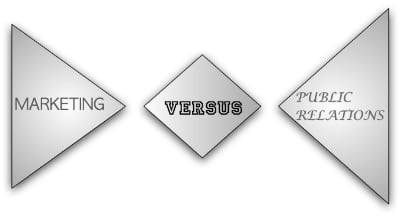 Understanding the distinctions can affect your profitability
Understanding the distinctions can affect your profitability
You may often hear the terms “public relations,” “marketing” and “advertising” used interchangeably. However, there are key differences among them. How much time and money you invest in each could affect your brand recognition, customer outreach and public image.
Most people know about advertising but are still somewhat confused about PR and marketing. It’s important to remember that you don’t have to choose one or the other. An effective communications plan incorporates all three in a strategic fashion. When utilized correctly throughout your sales cycle, PR and marketing can lead to increased growth and profitability.
It may help if you gain a better understanding of the different types of media:
Paid media is advertising. Any kind of promotion that you pay for will fall under this category. It may comprise commercials, sponsorships and banners on other websites. This is the information you want to yell from the rooftops, and you are willing to pay to ensure that everyone hears it. Paid media is the easiest to define and understand because it’s what most people envision when thinking of company image.
There is also owned media, which, as the name implies, is the media that you directly control. Most marketing initiatives fall under this category. This is the information you distribute about yourself and can include vehicles such as your website and internal publications.
The publicity you receive from independent sources is known as earned media. This is the attention you garner through your work, reputation and success. In other words, it’s what everyone else is thinking or saying about you – and that’s the basis for the work that PR performs.
The differences:
Marketing is responsible for helping to promote products and services, not necessarily the company as a whole. Marketing professionals are concerned with product, place and promotion, price and the market or audience involved to make those things succeed.
PR involves building and maintaining relationships with all the stakeholders of a company, including media, internal staff, government entities, customers and potential customers, investors, suppliers and the community. PR pros have numerous tools for accomplishing this, such as pitching stories to journalists, engaging clients on social media, finding opportunities for public speaking events, managing crises and ensuring that company spokespeople are properly trained.
For marketing, you may have to gather information on customers through vehicles such as market research, post-purchase outreach and advocacy.
PR helps to pave the way for consumer outreach. These experts ensure that customers and prospects already have a positive opinion about your product or industry before, during and after they encounter your owned or paid media.
Why PR is so critical to your company’s success
PR manages the communication and connection between your company and its publics. PR efforts demonstrate the value of choosing your company over a competitor.
Studies have shown that today’s consumer expects to have a sense of a company as a whole before developing a business relationship. Seeing advertising and visiting a website is no longer enough: They want real dialog, connections and value. This is where PR can be most beneficial.
Using tools such as social media platforms, reputation management and media relations, PR can help boost customer knowledge about your company. At Axia, our professionals will use proven PR strategies to increase your visibility, credibility and, most importantly, profits. Register today for our 60-Second Impact program to learn how we will put our skills to work for your company.
Lisa Goldsberry is a writer for Axia Public Relations with more than 15 years of public relations experience. She specializes in business, higher education and technology PR. Connect with Axia Public Relations on Twitter @axiapr.
Featured photo credit: PhotoBucket.com royalty
Topics: public relations


Comment on This Article